Drawing Marathon at ECU Challenges Students and Faculty to ‘Struggle Side by Side’
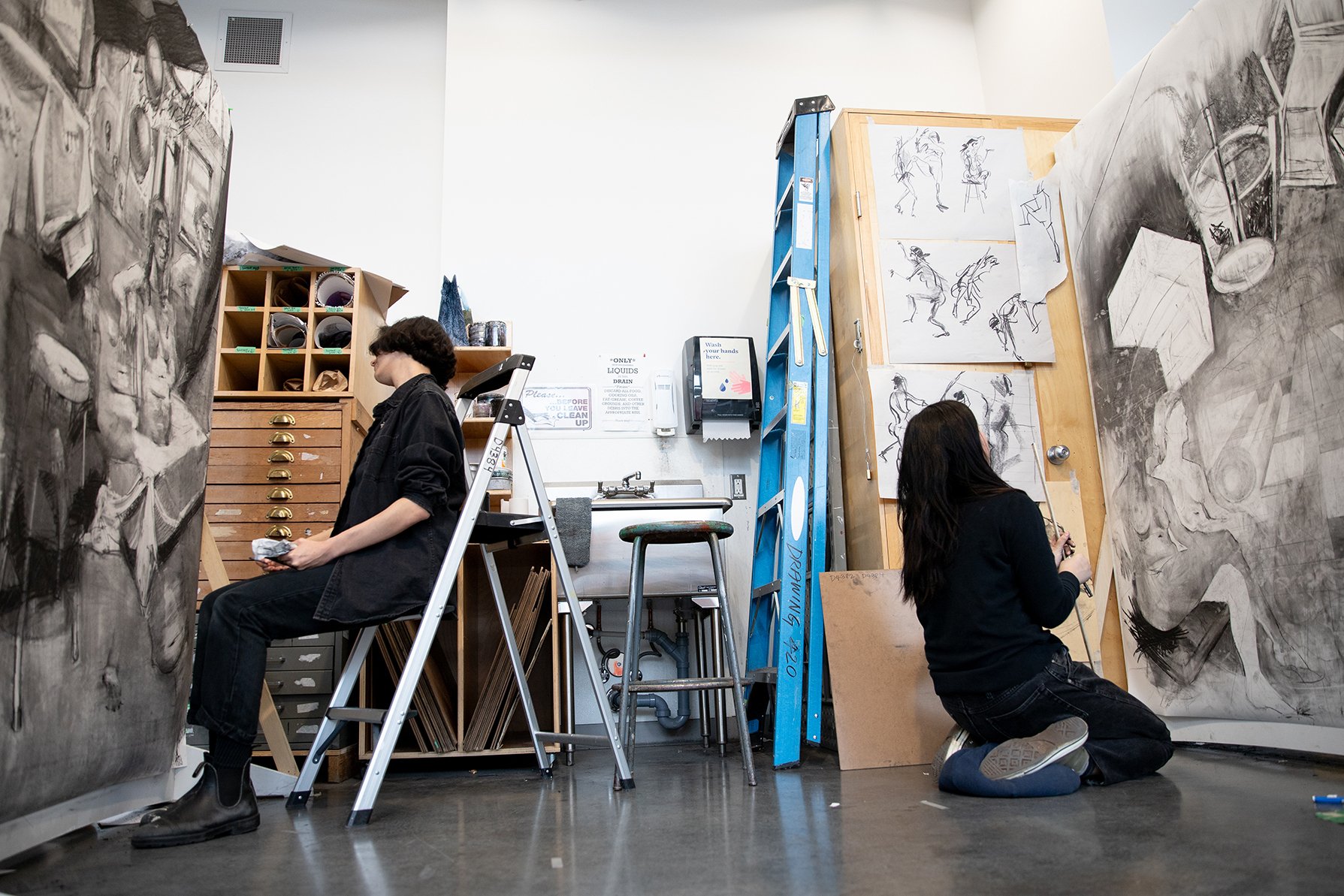
Artist and ECU faculty member Genevieve De Leon (left) and ECU student Gabriella Yan work during the 2024 Drawing Marathon at Emily Carr. (Photo by Perrin Grauer)
Posted on | Updated
Artwork produced during the three-day studio intensive will be on view in an exhibition at Emily Carr University through Mar. 1, 2024.
A Drawing Marathon hosted by ECU Drawing faculty with materials donated by Opus Art Supplies brought together 10 students with faculty artists for three nine-hour days, with artwork on view at Emily Carr beginning Feb. 26.
The marathon offers participants a chance to focus on drawing without interruption from study pressures or professional obligations. Rather than concern themselves with final outcomes, this process allows artists to become fully immersed in the act of drawing.
“Even though we have really wonderful long classes at ECU, three days of nonstop drawing where teachers and students are all struggling side-by-side under the same beast is a radically horizontal way of coming into the act of drawing,” says artist and ECU faculty member Genevieve de Leon. “It’s not some sage on a stage telling you the way to draw. We’re all finding that together.”
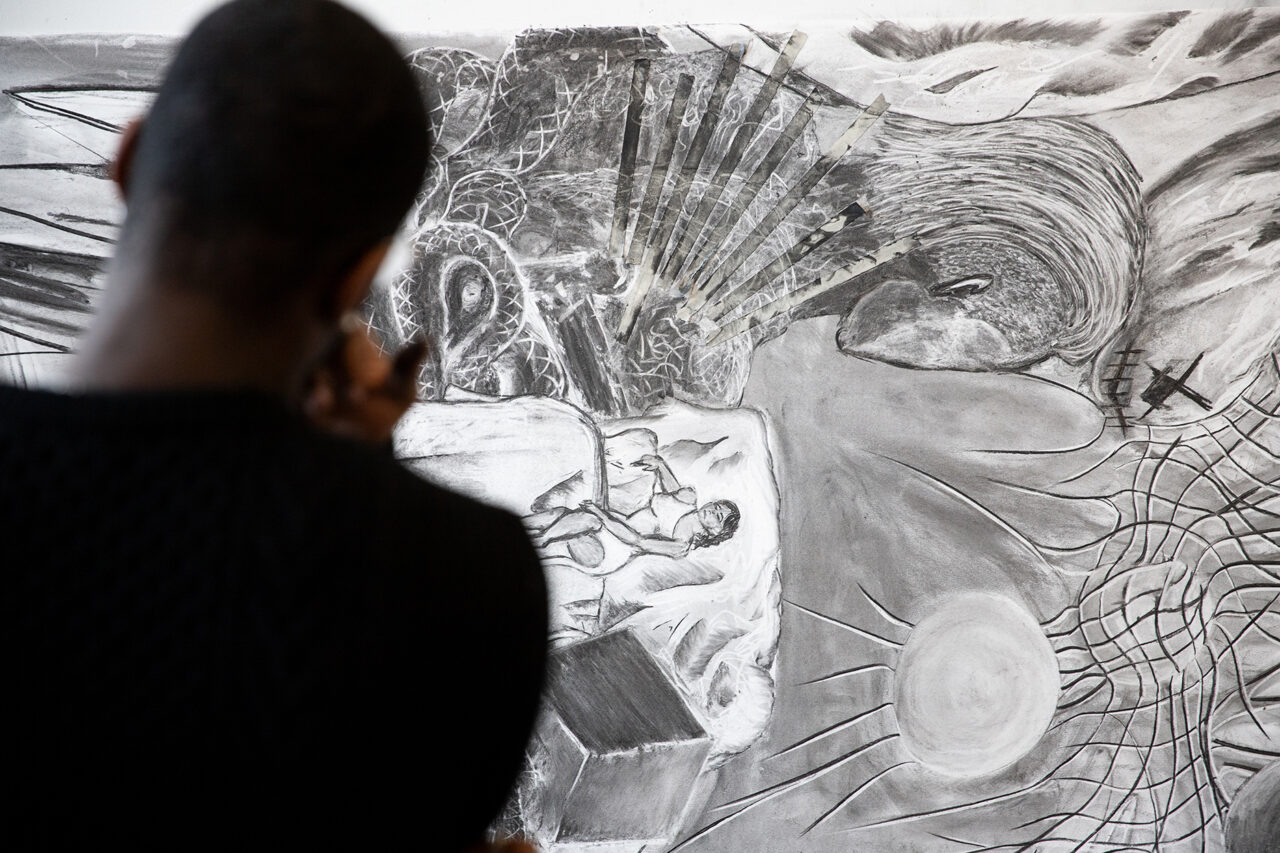
ECU student Adrian De-Heer-Amissah stands back to consider a drawing-in-progress. (Photo by Perrin Grauer)
Drawing marathons have happened at ECU before, but this year’s marathon is modelled on the New York Studio School’s (NYSS) legendary event of the same name.
Artist Mercedes Matter founded the NYSS in the 1960s based on a motivation to return to studio-focused and process-based learning. Mercedes was known for her insistence on sustained studio practice as a crucial concern for working artists and art students; she felt this concern had been forgotten by contemporary art schools of the period.
This same motivation animated the first Drawing Marathon in 1988. The event was started by Graham Nickson, who was Dean of NYSS at the time. The marathon has only grown in esteem since then. It attracts artists from across the globe, with participation amounting to a “quasi-religious experience” for many. As a model, it remains influential on practices and curriculums throughout the art world.
“A lot of established artists keep something vital alive in their practice through these spaces,” Genevieve notes. “We’re hoping to support this kind of durational, immersive experience and allow it to bleed into the drawing culture at Emily Carr more broadly.”
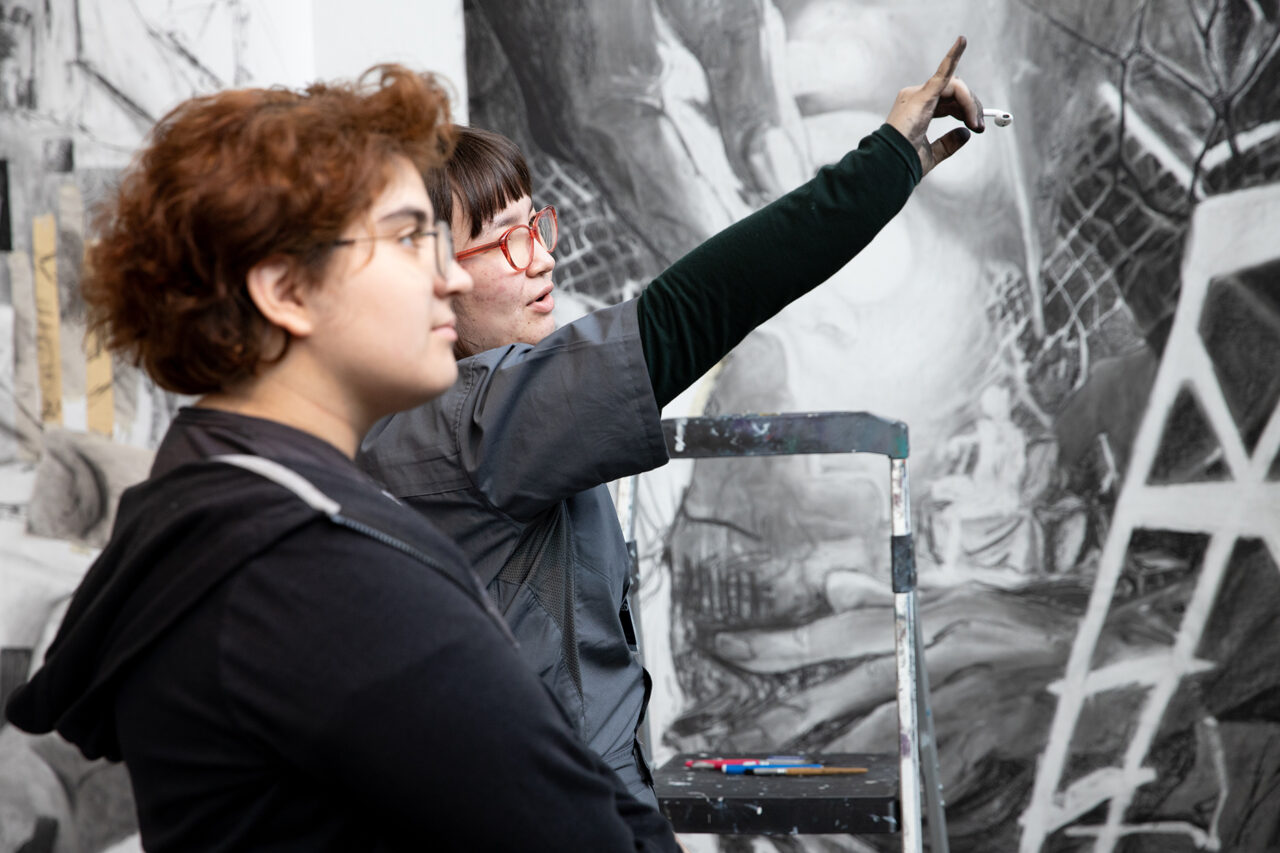
ECU students Lee Padilla (left) and Jade Kiko Toth take a break to chat about one another's work. (Photo by Perrin Grauer)
Artists worked from an elaborate still life in the centre of the room throughout the marathon. On the second and third days, human models were brought in to renew focus. Participants were continually asked to revise and rework their drawings throughout the event — a technique that keeps the emphasis on process and helps free artists from becoming overly precious about their work.
“It’s also part of questioning what it is we’re after,” Genevieve says. “We want to build a kind of urgency around the things that are immediate and present when you’re immersed in the studio.”
Genevieve says she and faculty colleagues Sara-Jeanne Bourget and Nick Conbere are looking at this year’s marathon as a pilot. They aim to evolve the event to include more participants and new challenges in future years based on their learning.
“I don’t think it’s common to have teachers right there alongside students struggling with the same tasks,” Genevieve says. “So I’m really excited to see what will happen with all of us in the room. It’s wide open.”
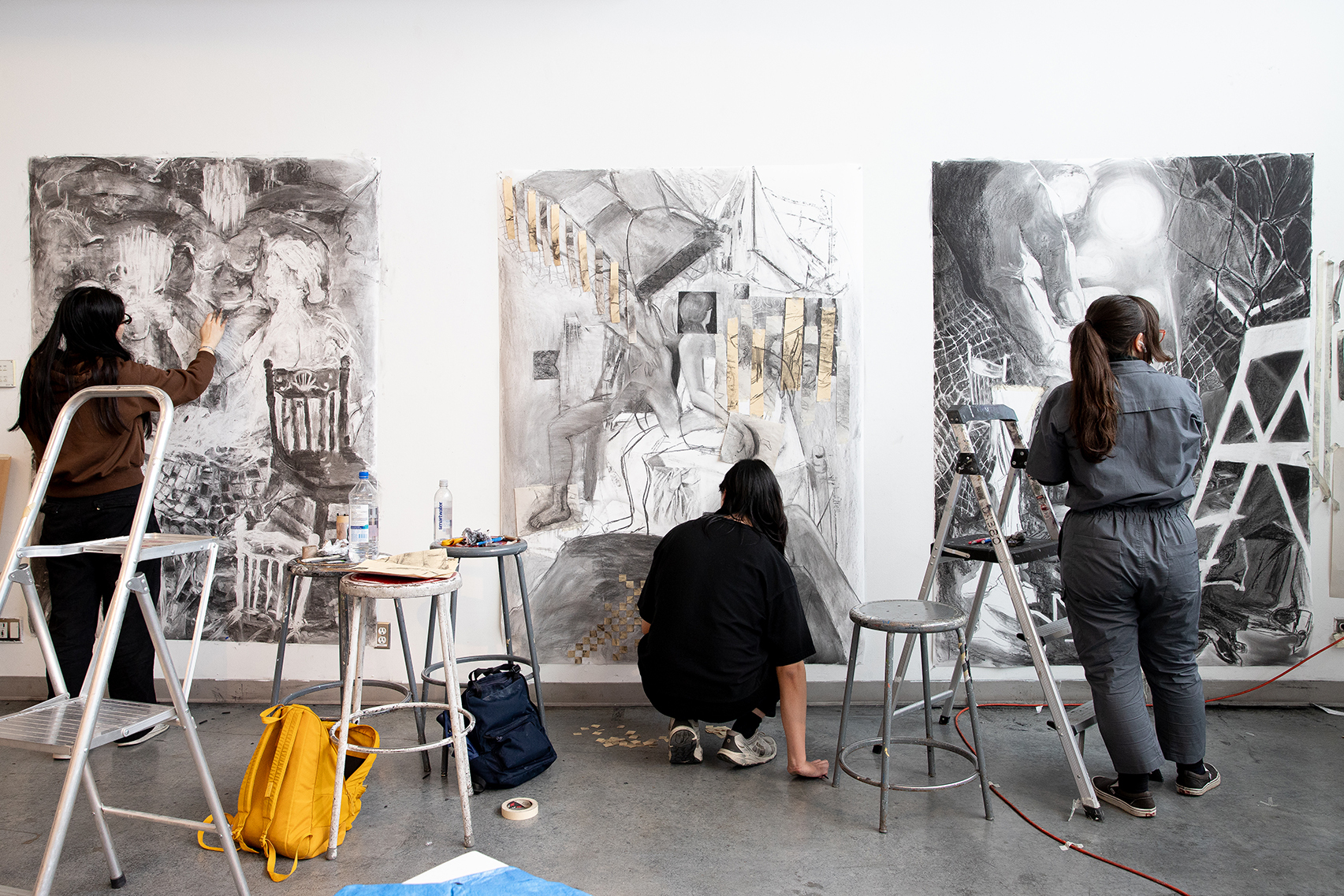
ECU students Shirley Li, Alex Wang-Chung and Jade Kiko Toth work in the final hours of the Drawing Marathon. (Photo by Perrin Grauer)
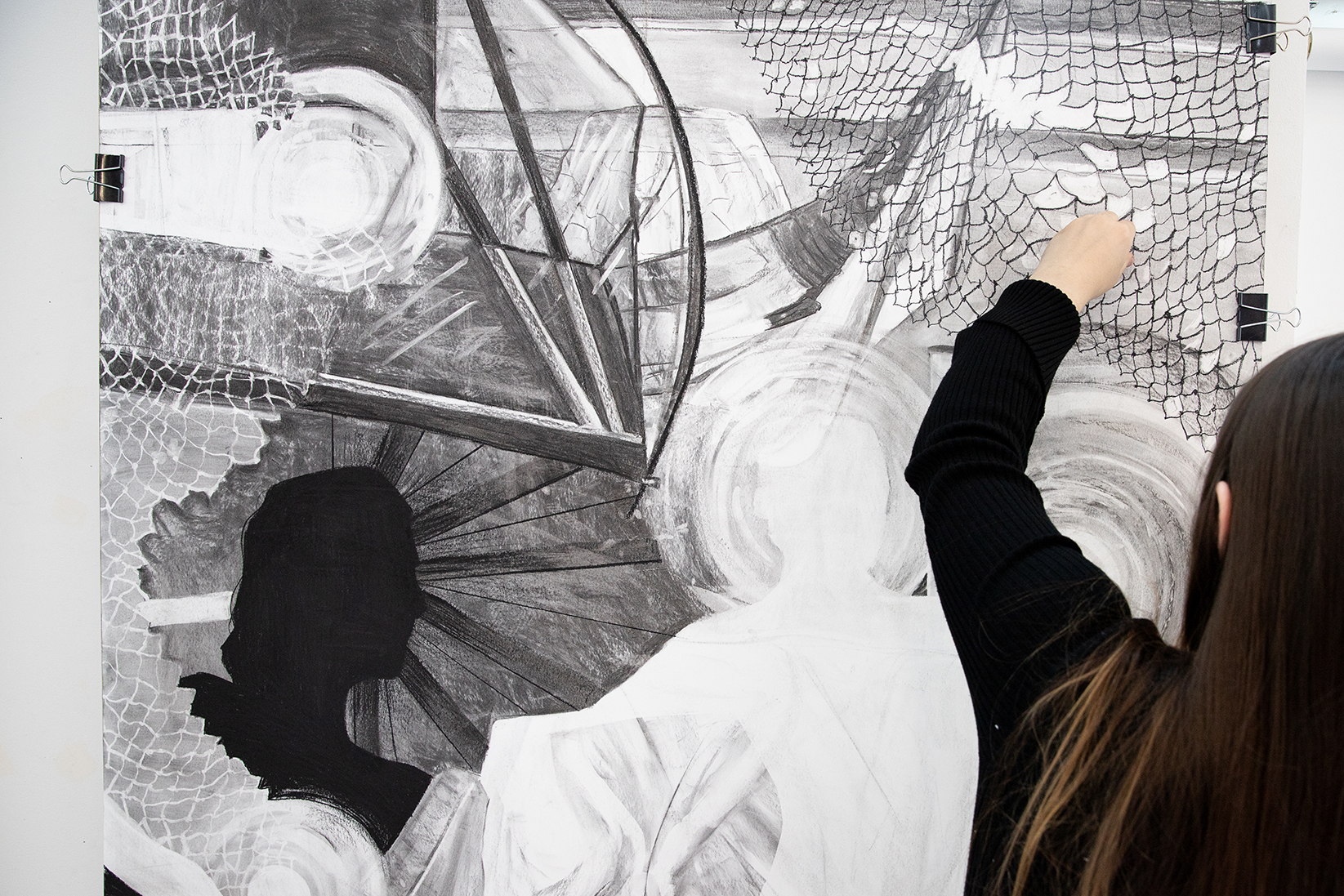
Student Lauren James-Davies puts the finishing touches on a drawing. (Photo by Perrin Grauer)
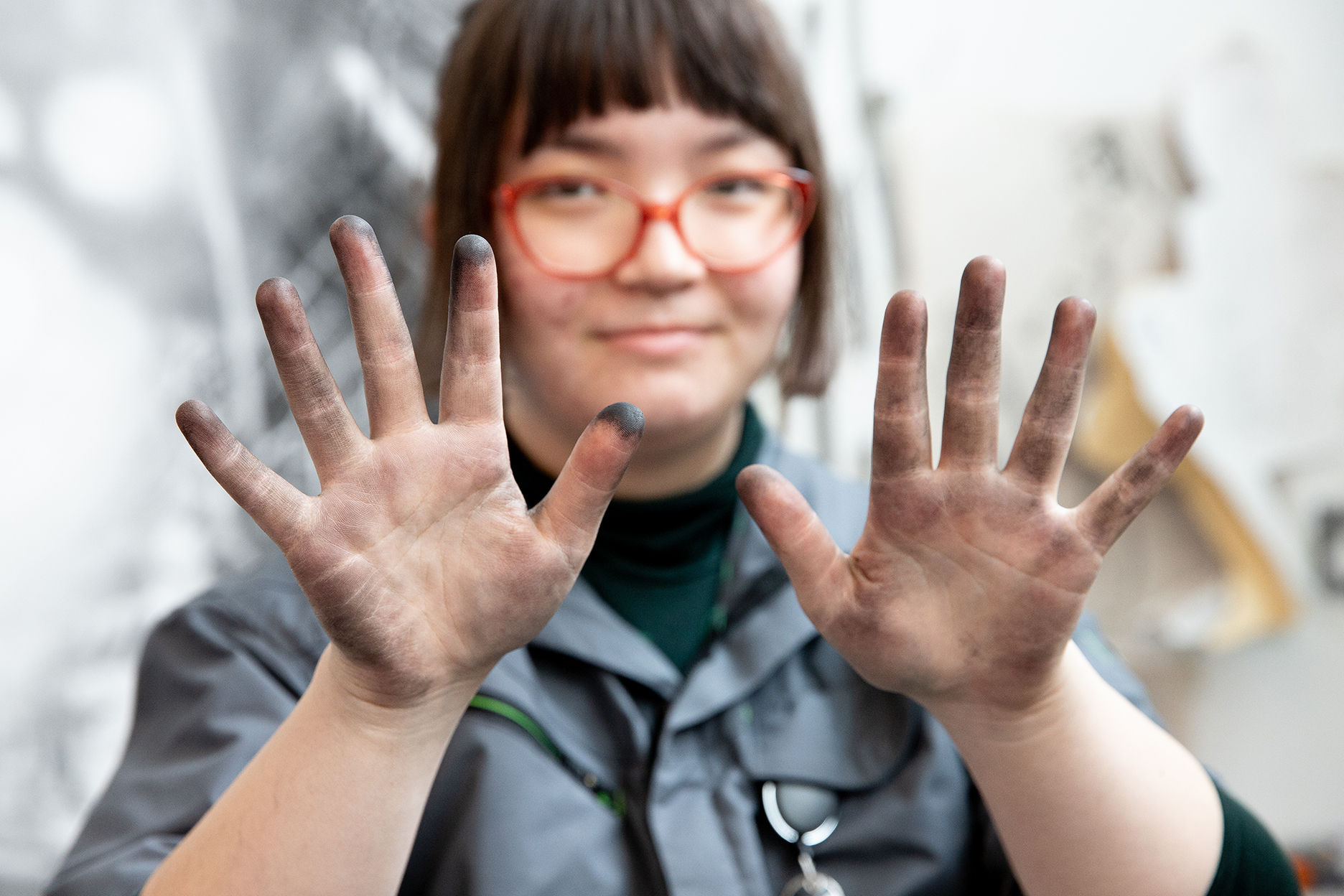
Jade Kiko Toth holds up charcoal-stained hands. (Photo by Perrin Grauer)
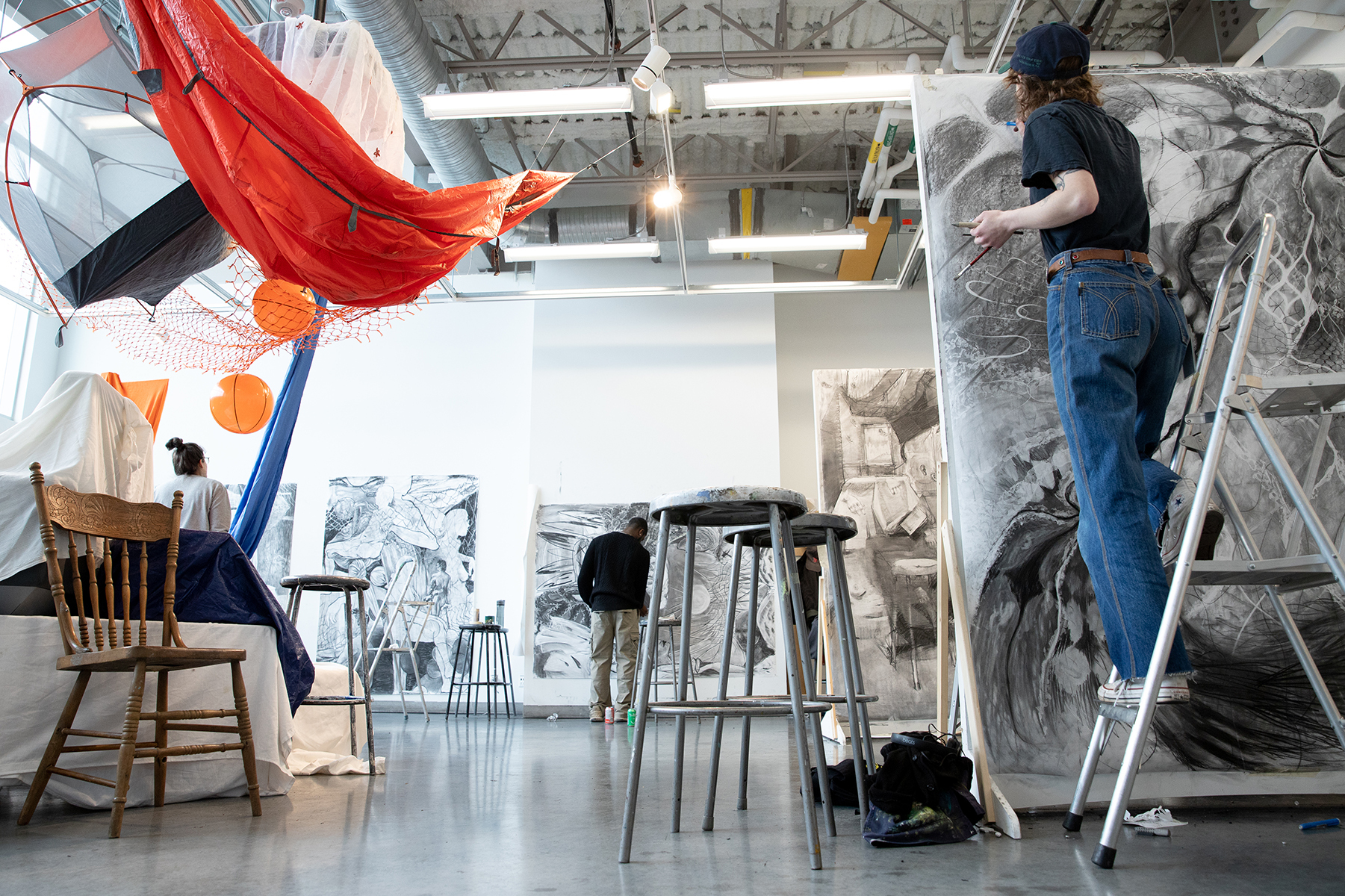
A large, chaotic still-life (left) provides a stable referent for artists throughout the marathon. (Photo by Perrin Grauer)
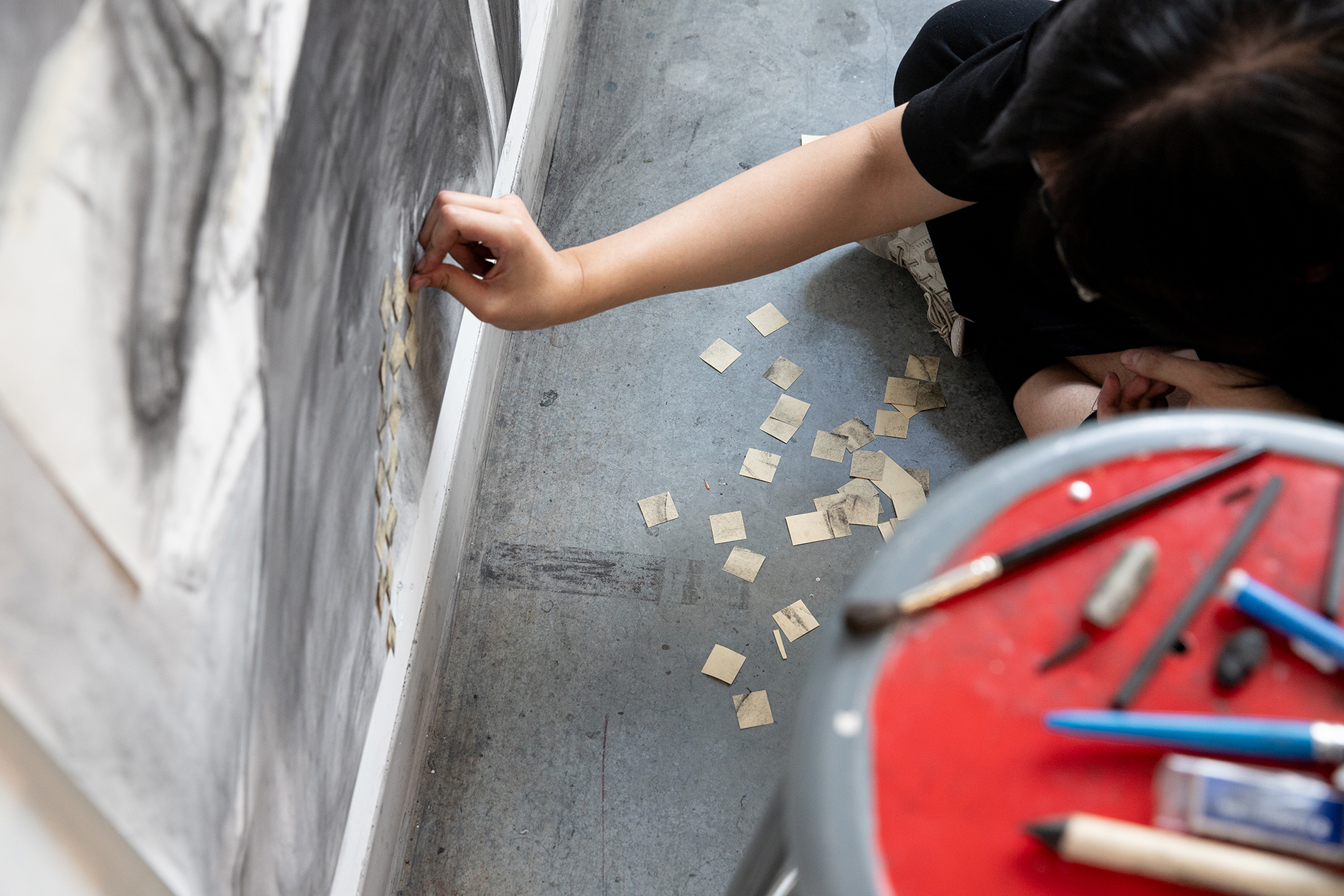
Alex Wang-Chung adds collaged touches. (Photo by Perrin Grauer)
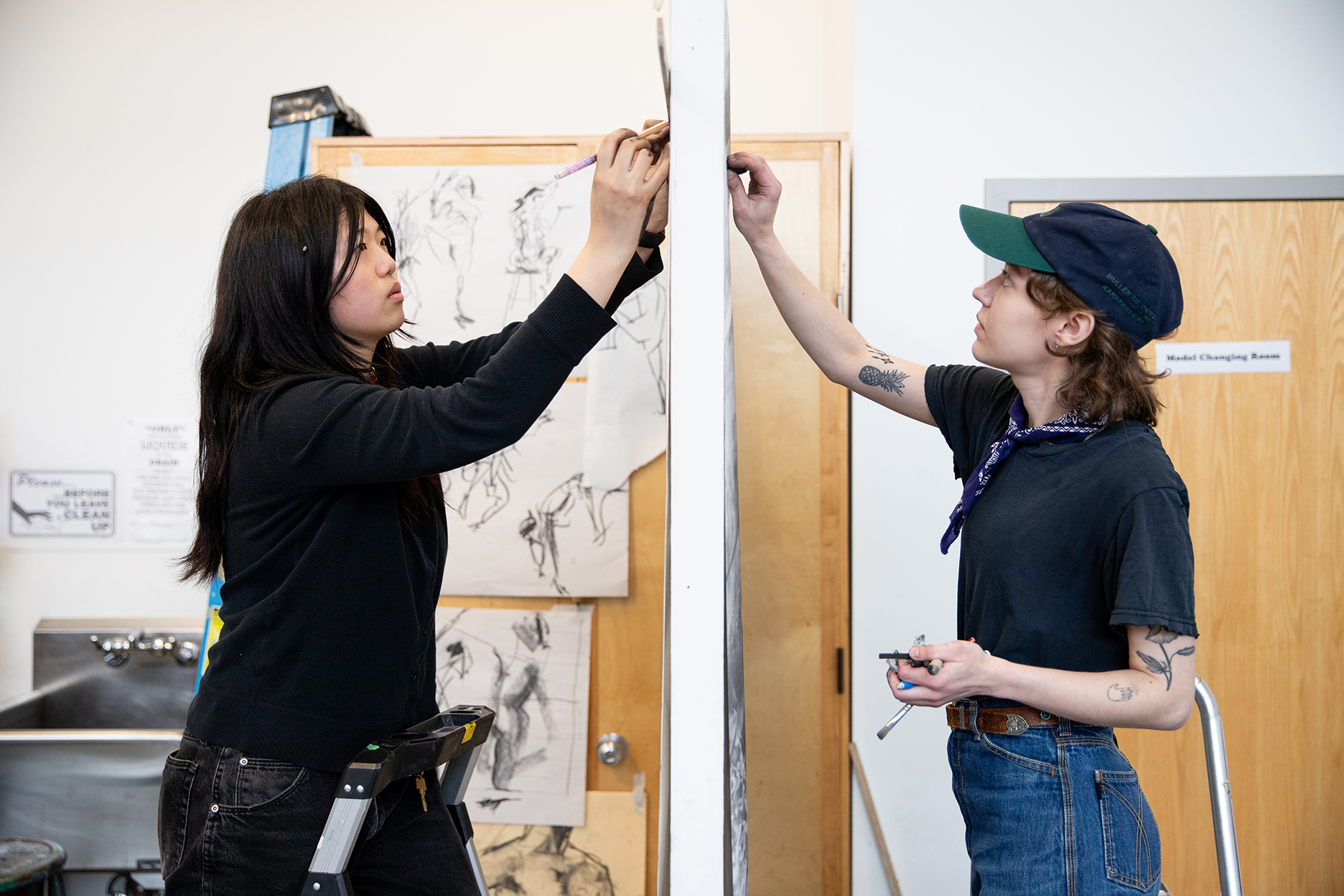
ECU students Gabriella Yan and Vanessa Bollinger make the most of a space divider. (Photo by Perrin Grauer)
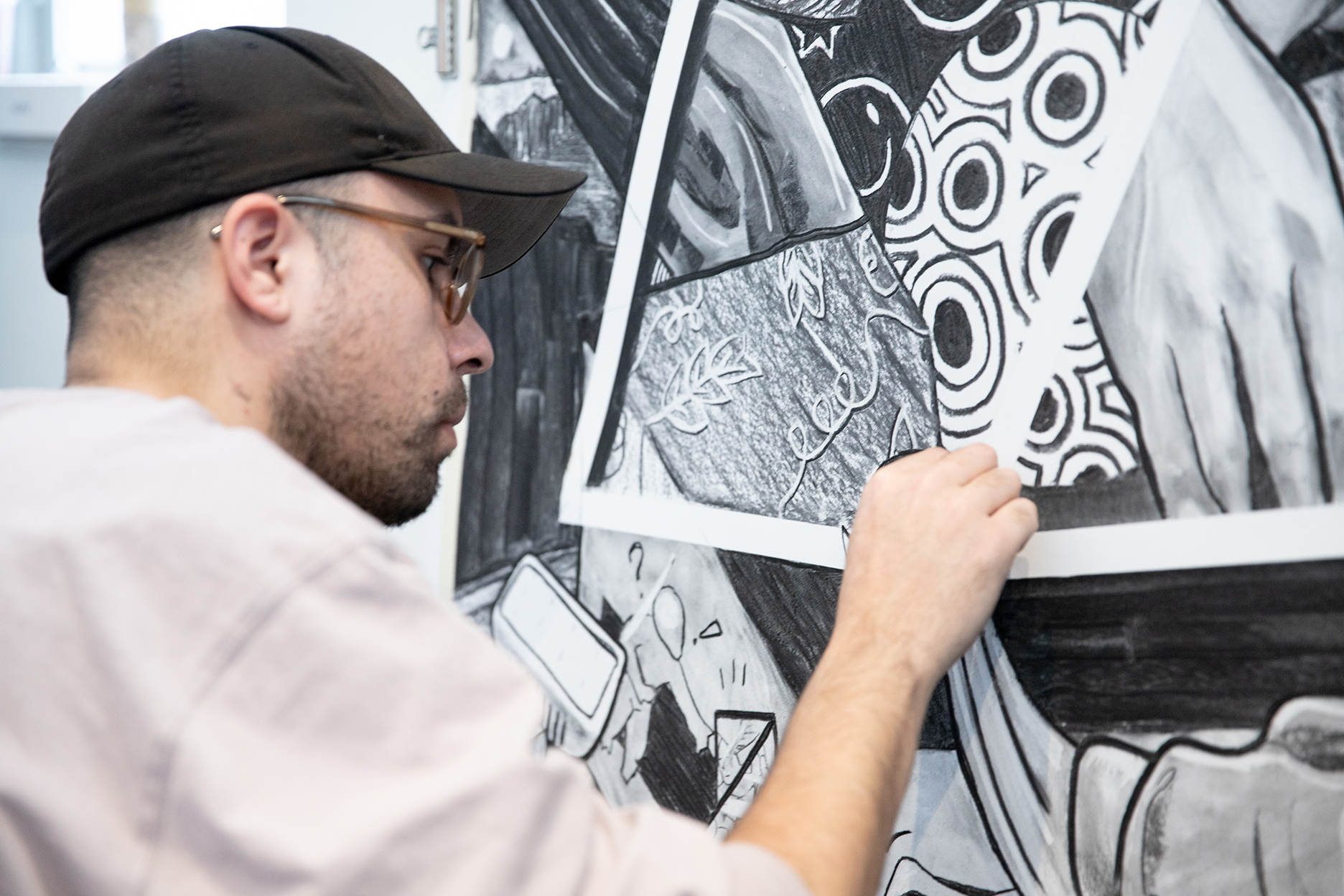
ECU student Christian Abt works up close during the marathon. (Photo by Perrin Grauer)
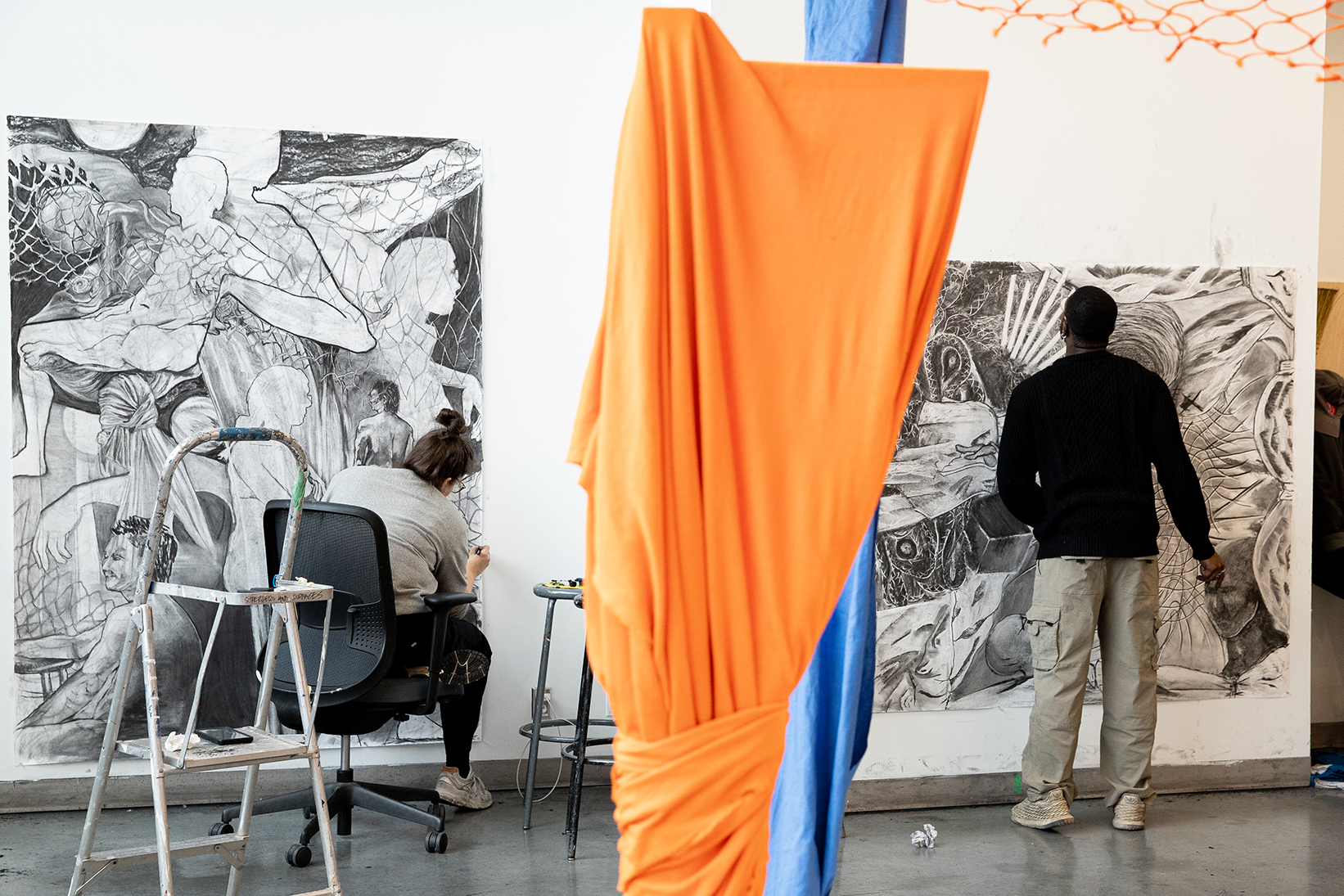
ECU faculty member Sara-Jeanne Bourget and ECU student Adrian De-Heer-Amissah work during the marathon's final stretch. (Photo by Perrin Grauer)
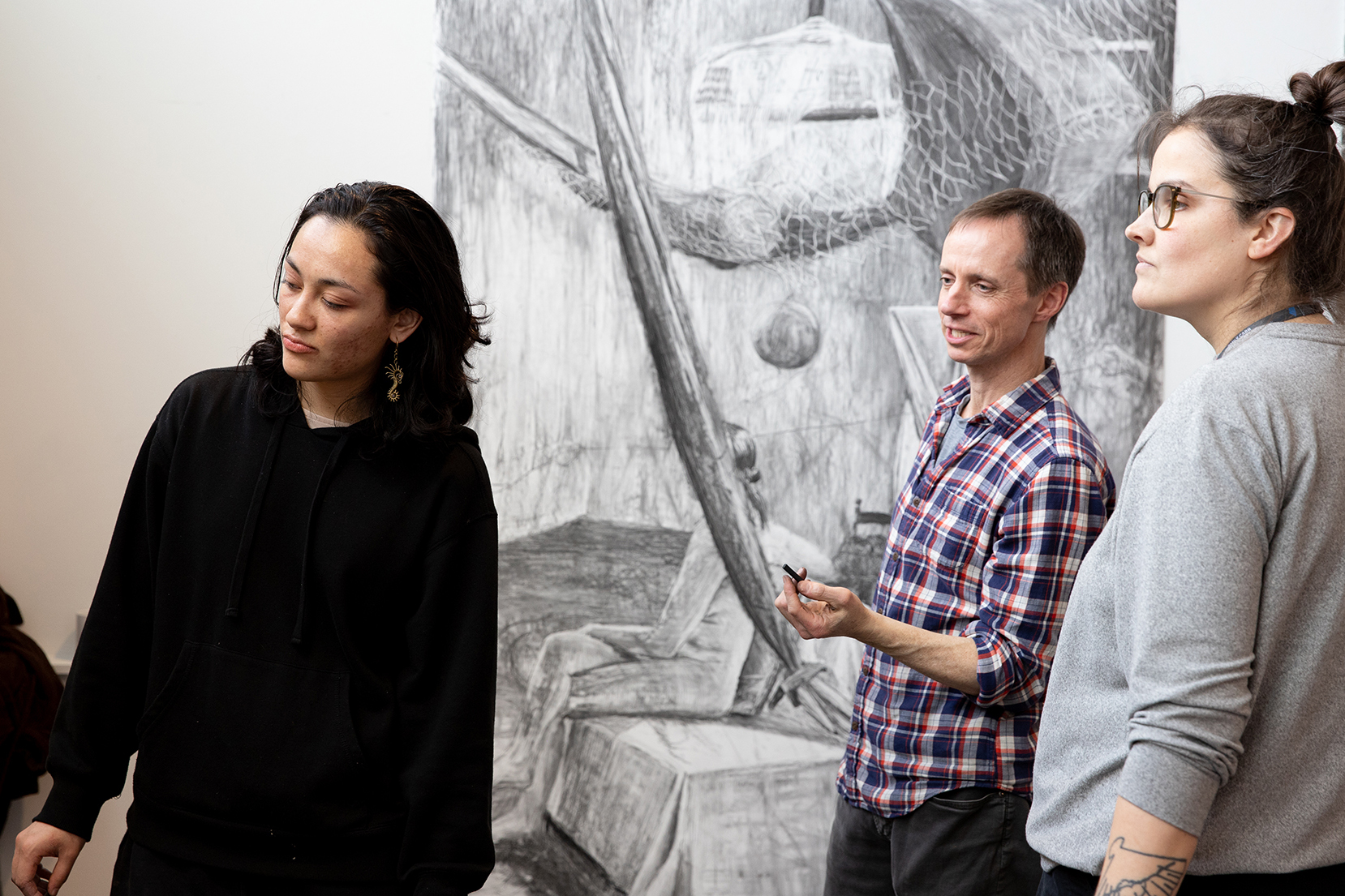
ECU student Aurora Yol (left), ECU faculty member Nick Conbere and Sara-Jeanne Bourget (right). (Photo by Perrin Grauer)
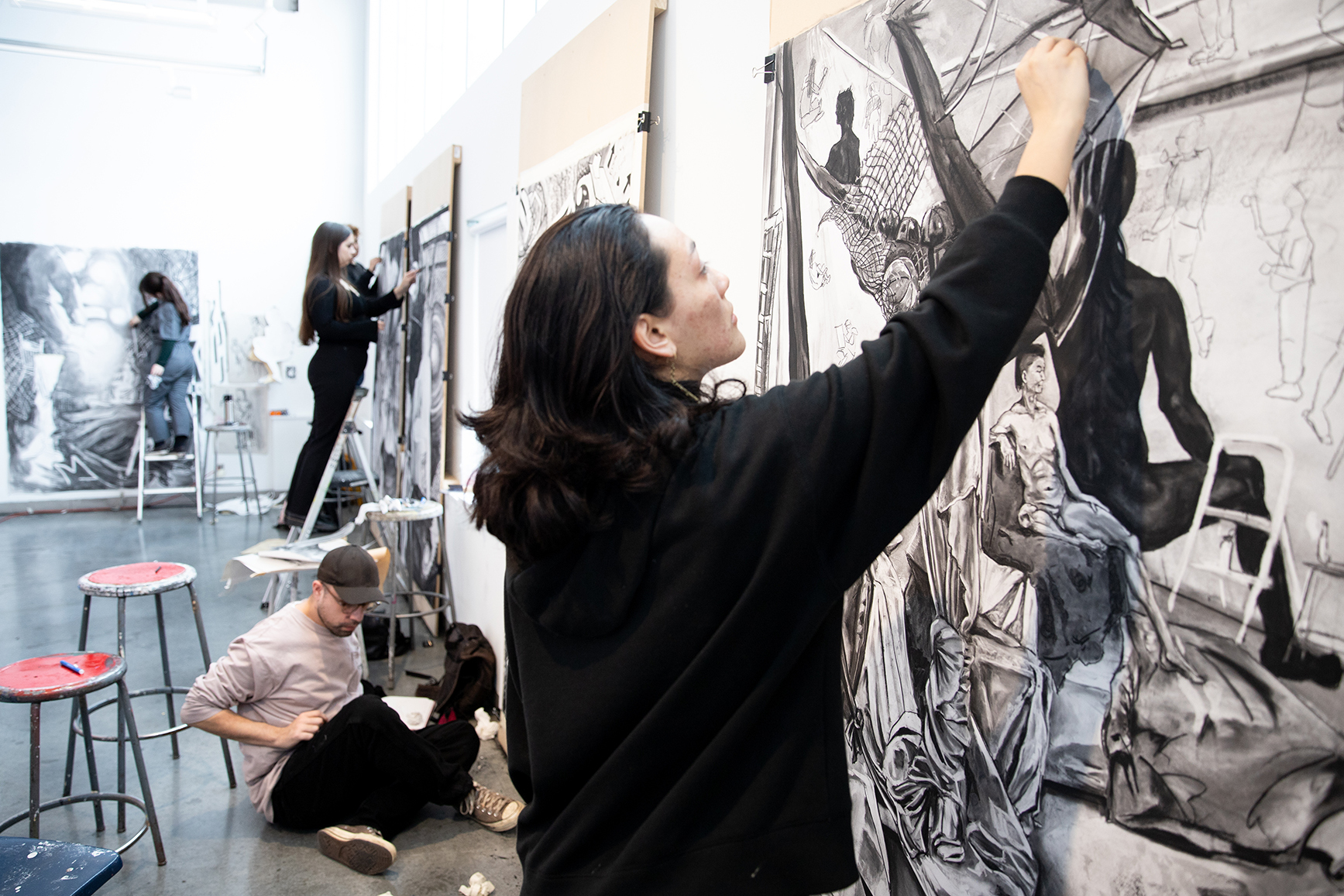
(L to r) Jade Kiko Toth, Lauren James-Davies, Christian Abt and Aurora Yol. (Photo by Perrin Grauer)
The work produced during the 2024 Drawing Marathon will be on view in the Michael O’Brian Exhibition Commons atrium from Feb. 26 through Mar. 1. Admission is free and open to the public.
Visit ECU online to learn more about studying Drawing at Emily Carr.